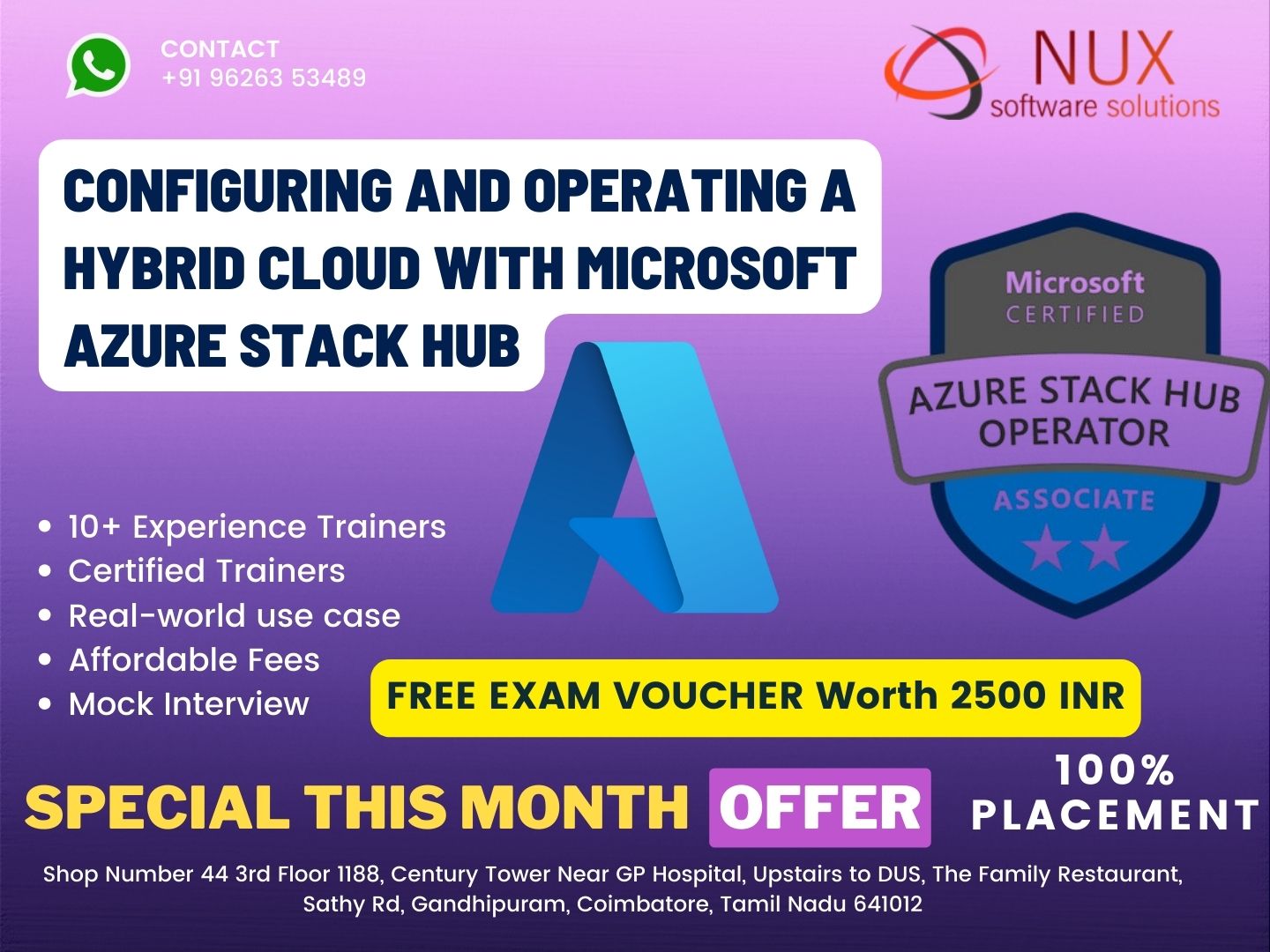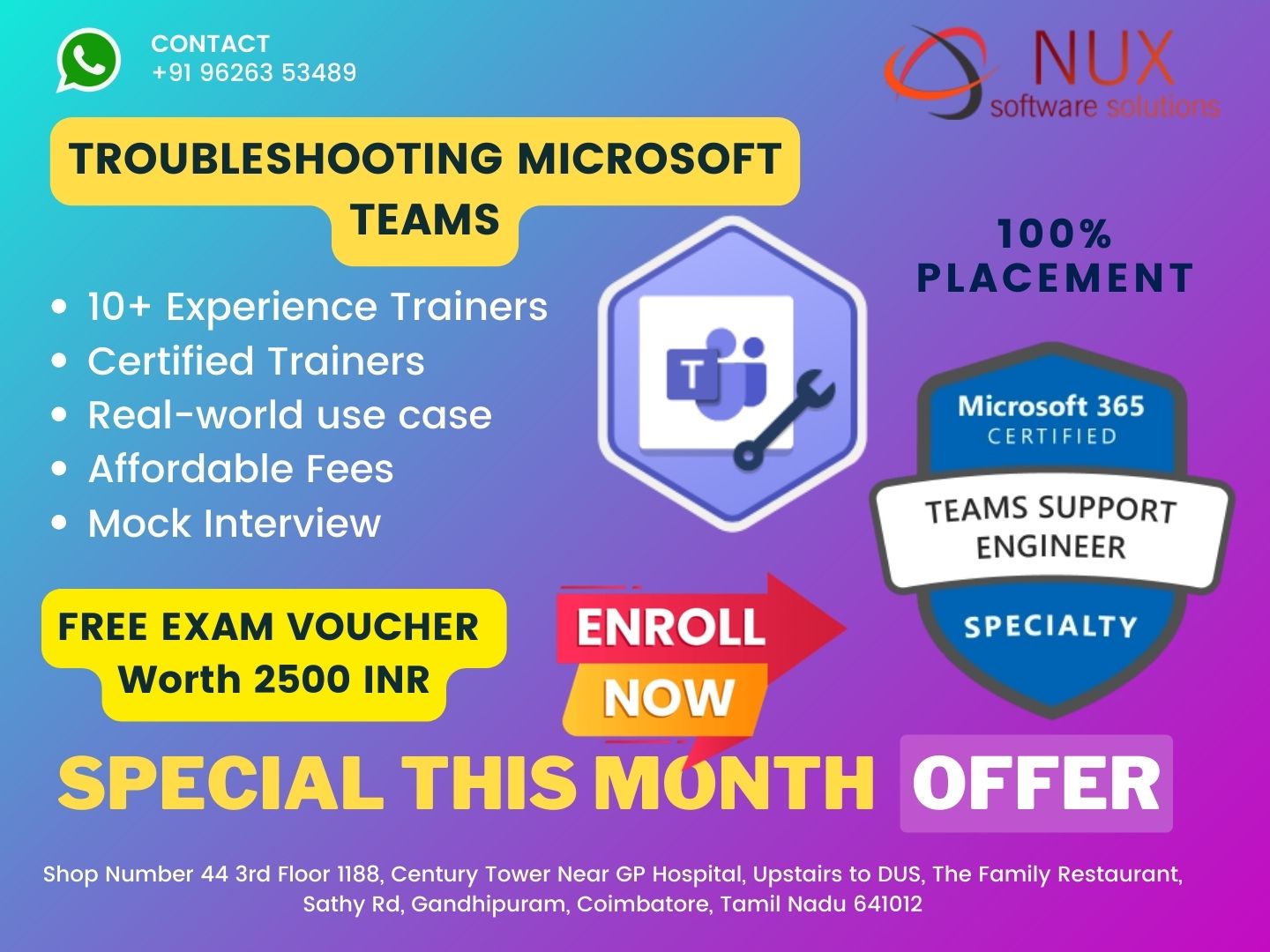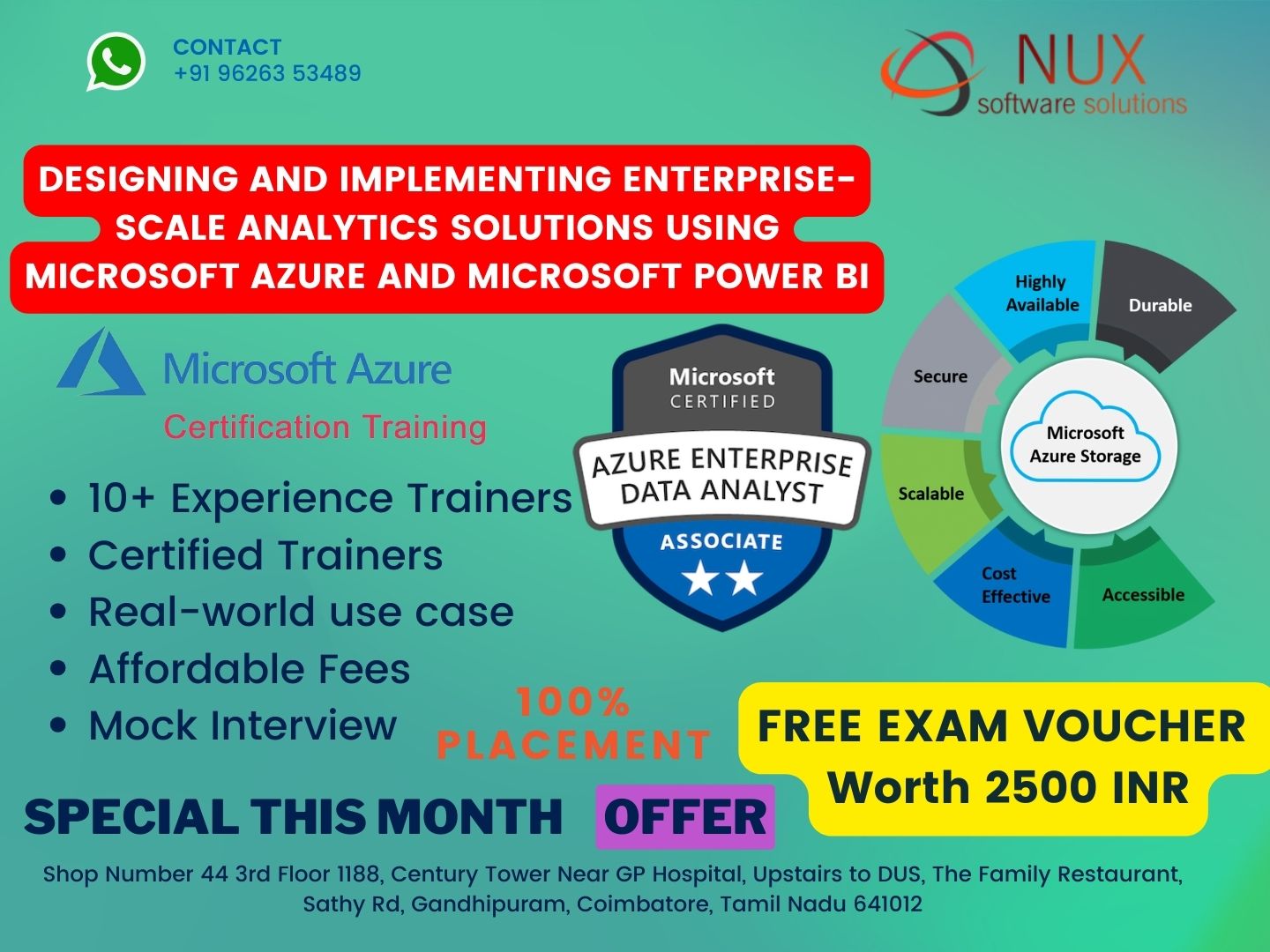Configuring and Operating a Hybrid Cloud with Microsoft Azure Stack Hub – AZ-600


Configuring and Operating a Hybrid Cloud with Microsoft Azure Stack Hub – AZ-600 is a leading cloud certification, and to become an expert in this domain, Nux Software Solutions is your one-stop destination. Over the years, we have been a premier institute for delivering quality training across various IT domains. Our team of experts and highly qualified faculty members are dedicated to providing exceptional training to our students.
At Nux Software Solutions, we offer meticulously designed and effective course material focused on lab work and extensive hands-on application. We ensure our students receive maximum practical exposure, equipping them with the skills needed to excel in their professional careers.
Join Nux Software Solutions to master the Configuring and Operating a Hybrid Cloud with Microsoft Azure Stack Hub – AZ-600 course. Gain practical skills, learn from industry experts, and advance your career in hybrid cloud solutions.
AZ-600 Course Syllabus
Modules
Plan and deploy Azure Stack Hub (30–35%)
Plan an Azure Stack Hub deployment
Recommend a deployment model for a specific scenario
Recommend a name resolution strategy
Define fully qualified domain name (FQDN) and region name
Recommend a public and internal IP strategy
Define static routes or Border Gateway Protocol (BGP) configuration
Recommend a datacenter firewall integration strategy
Choose between Microsoft Entra ID and Active Directory Federation Services (AD FS)
Validate identity provider and network by using the Azure Stack Hub Readiness Checker tool
Select a billing model
Plan and implement infrastructure certificates for Azure Stack Hub
Choose between an Enterprise certificate authority (CA) and a public certificate
Prepare certificates for Azure Stack Hub
Import certificates
Export PFX files
Prepare folder structure
Validate certificates by using the Azure Stack Hub Readiness Checker tool
Rotate secrets for certificates
Manage Azure Stack Hub registration and billing
Recommend a registration model
Register in a connected environment
Register in a disconnected environment
Validate Azure Stack Hub registration
Refresh Azure Stack Hub registration
Set up usage data reporting
View and retrieve usage data by using the usage API
Manage usage and billing in multitenant and cloud solution provider (CSP) scenarios
Set up management environment
Obtain and connect to Azure Resource Manager endpoints
Download and deploy Operator Access Workstation
Install PowerShell modules for Azure Stack Hub
Enable Azure CLI for Azure Stack Hub users
Download and deploy Azure Stack PowerShell tools
Add relevant environment based on a scenario
Enable the Emergency VM Access Service (EVA)
Provide services (20–25%)
Manage Azure Stack Hub Marketplace
Populate Azure Stack Hub Marketplace from a connected environment
Populate Azure Stack Hub Marketplace in a disconnected environment
Create a custom Azure Stack Hub Marketplace item
Manage the lifecycle for Azure Stack Hub Marketplace items
Create an ARM template
Offer the Azure App Service resource provider
Plan the App Service resource provider deployment
Deploy the App Service resource provider
Update the App Service resource provider
Scale roles based on capacity requirements
Rotate App Service secrets and certificates
Manage and monitor worker tiers
Back up App Service resource provider, including SQL databases, file server share, and secrets
Offer the Azure Event Hubs resource provider
Plan an Event Hubs resource provider deployment
Deploy an Event Hubs resource provider
Update an Event Hubs resource provider
Rotate Event Hubs secrets and certificates
Offer services
Create and manage quotas
Create and manage plans
Create and manage offers
Create and manage user subscriptions
Change user subscription owner
Manage infrastructure (40–45%)
Manage identity and access
Assign users and groups in Azure Stack Hub
Grant an app access to resources
Define a custom role in Microsoft Entra ID for delegating Azure Stack Hub management tasks to users
Register a tenant directory with Azure Stack Hub
Update a tenant directory
Unregister a tenant directory
Monitor and maintain system health
Monitor system health by using the administrator portal
Monitor system health by using PowerShell
Monitor system health by using the REST API
Respond to and manage alerts
Validate health and system status by using Test-AzureStack
Monitor Azure Stack Hub infrastructure certificates
Collect diagnostic logs on demand by using the administrator portal
Collect diagnostic logs on demand by using the privileged endpoint
Configure automatic diagnostic log collection
Configure syslog forwarding for Azure Stack Hub infrastructure
Plan and configure business continuity and disaster recovery (BCDR)
Retrieve BitLocker recovery keys
Recommend a BCDR strategy
Recommend a solution for tenant backups
Choose a method for infrastructure backups
Configure storage target for infrastructure backups
Configure certificates for infrastructure backups
Configure frequency and retention policy for infrastructure backups
Test backup and restore of infrastructure by using Azure Stack Development Kit
Enable backup by using PowerShell
Validate success status of backup
Perform node and system-wide operations
Add nodes
Manage storage capacity by reclaiming space or rebalancing
Add IP pools
Stop and start Azure Stack Hub
Perform node operations, including start, stop, resume, repair, drain, and shutdown
Configure Time Server (NTP)
Configure syslog server
Configure DNS server
Update Azure Stack Hub, including scheduling, deploying, monitoring, and troubleshooting
Update Microsoft Entra home directory
Configure and use privileged endpoints
Connect to a privileged endpoint
Configure the cloud admin user role
Unlock a support session
Close the session on the privileged endpoint



